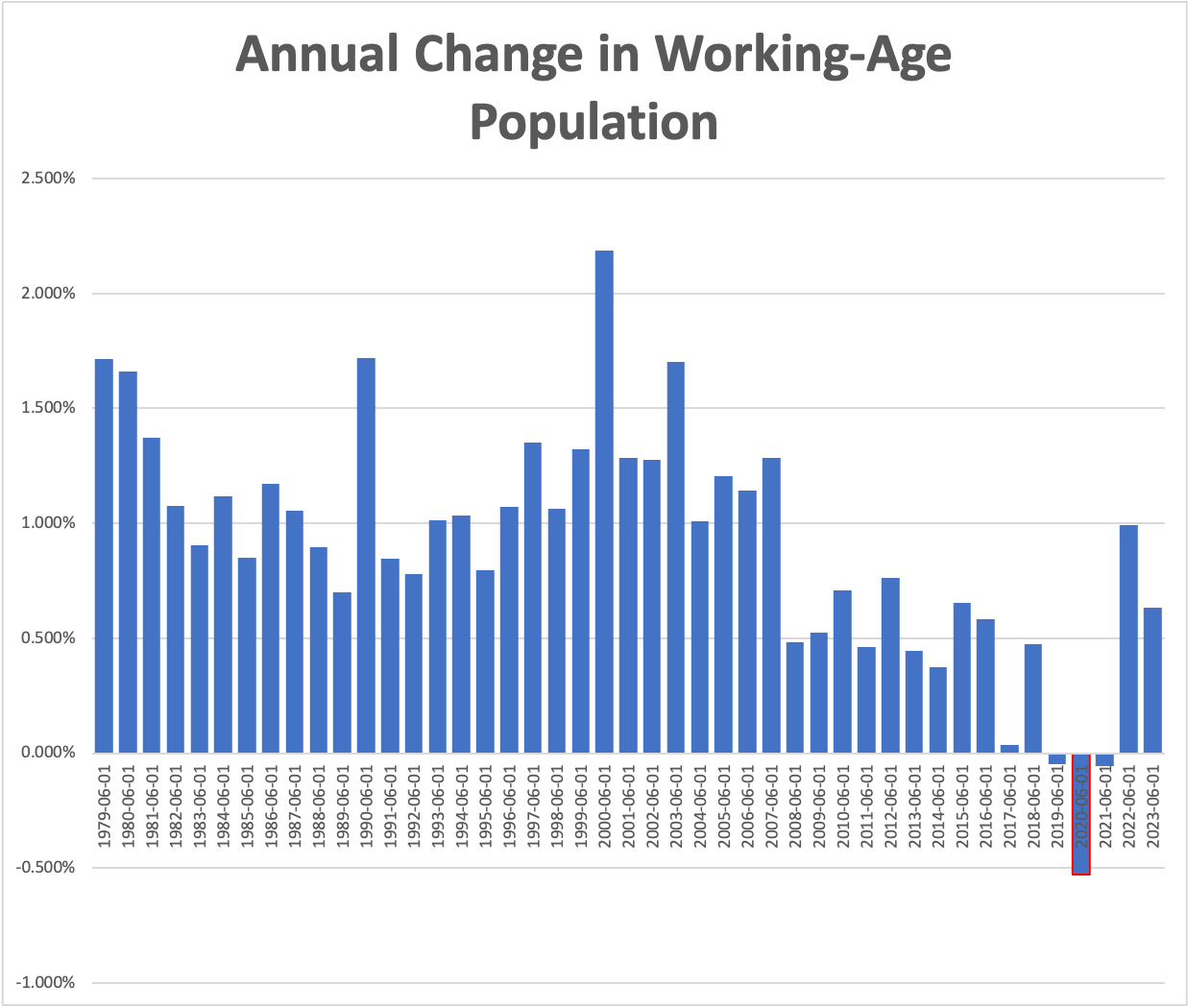
Demographic dusk: Monthly numbers hint toward coming worker shortage
Timothy P. Carney
Video Embed
I am a middle-aged man. For most of my life, the United States’s working-age population, as characterized by the Organisation for Economic Co-operation and Development, has grown at an annual rate of about 1% or more. That means that over any given five-year stretch, the working-age population (15 to 64) has grown by more than 5%.
Here’s the annual change in the working-age population in the U.S., going from the data just published this month back to the first year of data we have, published the month I was born.
UP FOR DEBATE: WHERE TRUMP, DESANTIS, AND REST OF REPUBLICAN 2024 FIELD STAND ON KEY ISSUES

You see a few interesting things there.
For one, COVID, by killing millions, reduced the working-age population immensely. But also, the working-age population ticked down from mid-2018 to mid-2019, even pre-COVID. Third, the working-age population really slowed its growth in 2008. The Great Recession slowed immigration, then the baby boomers in 2010 started hitting retirement age.
As an important aside, it’s worth noting here that the OECD’s definition of working age includes 15-, 16-, and 17-year-olds, which is not quite how America thinks of working age.
But the general picture is this: Our working-age population is flatlining.
Over the past five years, the working-age population increased by less than 1%. That’s easily the lowest period on record. The previous two periods (2008-2013 and 2013-2015) saw increases of 2.1% and 2.9%. Before that, the working-age population always increased by more than 5% every half-decade.
Here’s the thing: It’s about to fall off a cliff. The Great Recession started in 2008. The Baby Bust started that year. We’ve had fewer babies almost every year since then.
As a result, the working-age population will begin shrinking within a year. (If you wanted to focus only on 18-to-65-olds, that will start shrinking in another couple of years.) Then it will shrink for the foreseeable future.
At the same time, the retired population is growing at an accelerating pace. This means a rapidly increasing dependency ratio, which means a lower quality of life: Retired people will need their sinks repaired, but there won’t be enough plumbers around to do it.
It means higher wages and lower unemployment for the shrinking number of working-age folks, but that could just fuel more demographic decline. Right now, one of the biggest forces driving the birthrate so low is the high opportunity cost of leaving the workforce in order to raise children. That opportunity cost will just go up as the demand for work stays constant and the supply of potential workers shrinks.
It’s a death spiral — or at least a nonbirth spiral.
